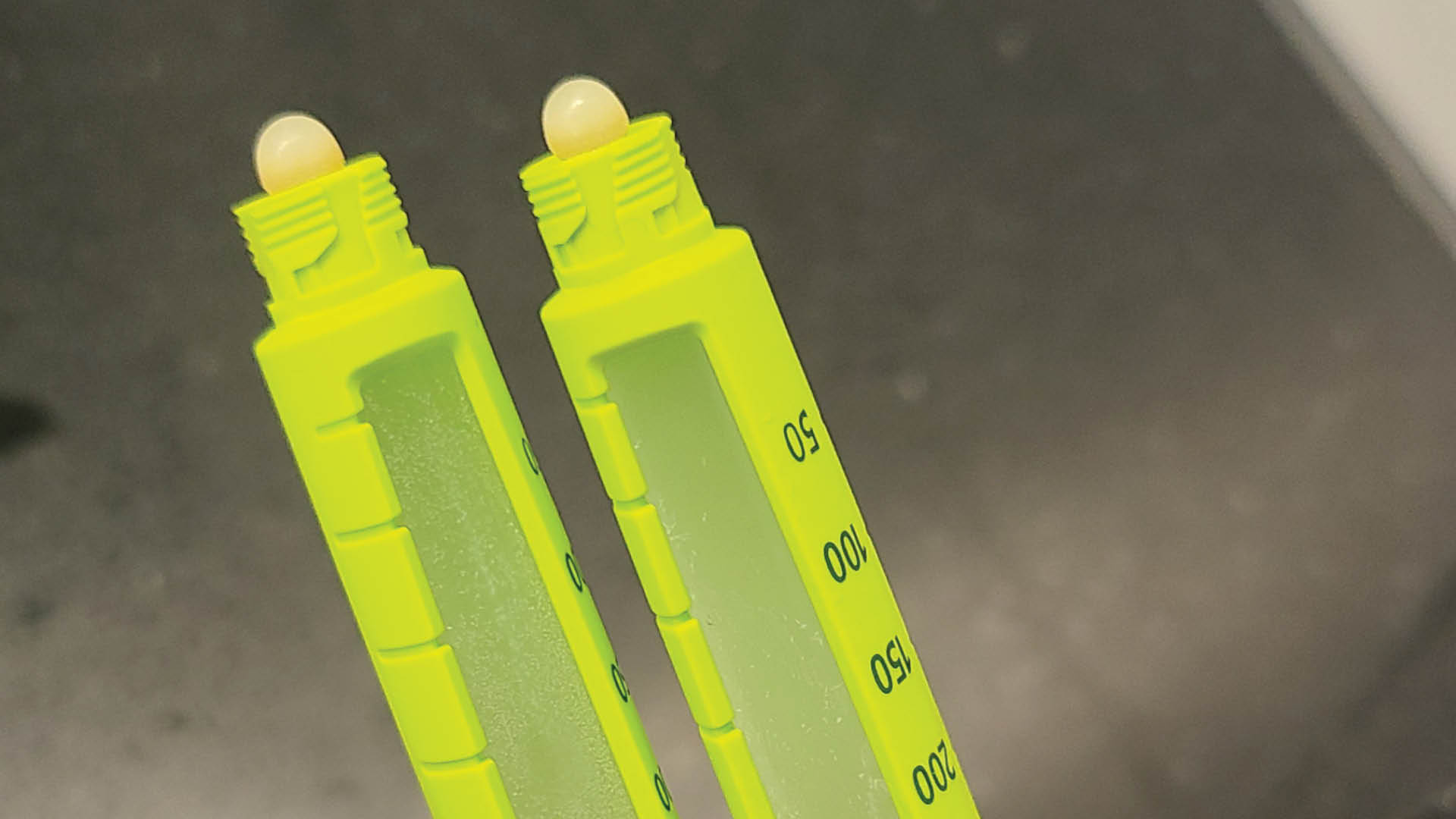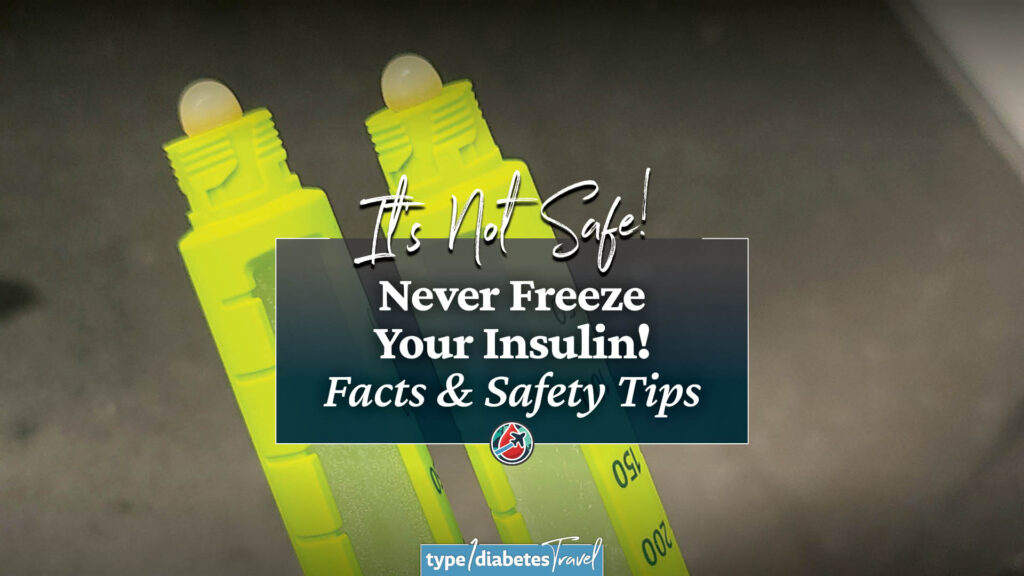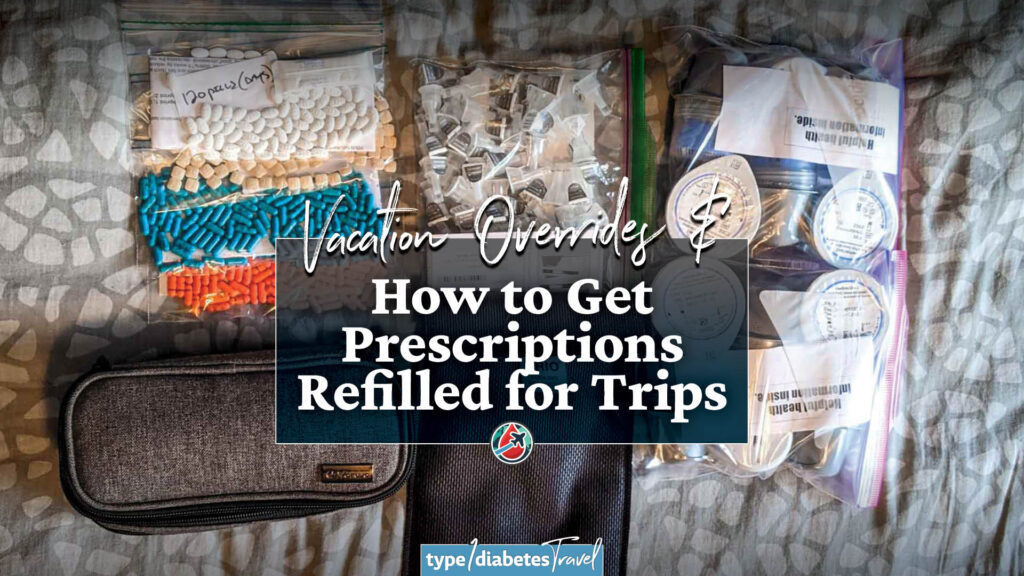I Froze My Insulin Flexpens Flying To Europe—Tips For Traveling With Insulin
My First Time Traveling With Insulin And I Froze My Insulin Pens
I knew that flying with diabetes and traveling with insulin was going to be tricky. Still, I never thought I would have two frozen insulin flexpens after my first international flight while on the way to explore Portugal for three months.
It was barely a year earlier that I had been diagnosed with type 1 diabetes. At age 42…and having just sold everything I owned to become a location-independent nomad. And it was my first time flying with diabetes supplies. Heck, my first time flying since diagnosis…which happened during the height of Covid.
Just to be clear, this little ditty is for you (or a friend or family member if you’re willing to share) if you are planning on traveling with insulin, regardless of what type of diabetes you may have.
Sign Up Now For New Travel Tips & Inspiration
This site participates in the Amazon Services LLC Associates Program and other affiliate programs and may earn from qualifying purchases.
DISCLAIMER: Always consult a healthcare professional before making any medical decisions. The information on this website should not be used as a substitute for professional medical care or advice. It provides general information and does not make any warranties about the completeness, reliability, or accuracy of this information. Type 1 diabetes travel will not be liable for any losses and/or damages in connection with the use of this website.
I’ll talk about how I got the courage up to travel with diabetes—long-term travel internationally at that—under such ominous circumstances. We’ll also talk about insulin producers, the insulin travel case I was using, and more importantly the insulated insulin travel case that I use now. If you’re planning on traveling with insulin, it will be tricky.
So I hope this story gives you the confidence to know that you’ll figure it out when things go wrong…because they will go wrong.

Leading Up: Selling It All, Going Nomadic, & Getting Diagnosed With Type 1 Diabetes
Quick recap on the two years before this trip, and before I was diagnosed with type 1 diabetes:
- 2 years before this trip – Sold my house and belongings so that I could be nomadic, after a lot of learning and life changes. Oh…I had only traveled to three countries outside the US…at age 41. After selling, I overlanded across the US then fast traveled across Europe and saw a few more countries. (To be clear, I recommend slow travel…not fast travel like I did!)
- 18 months before this trip – I was in Queretaro, Mexico for two months, which ended with me flying home at the beginning of travel shutdowns due to Covid.
- 12 months before this trip…almost to the day) – I was diagnosed with type 1 diabetes at age 42. I was single and traveling solo, so it was a pretty rough time.
- 3 months before this trip – I felt that I was doing “well-enough” living with diabetes while locked-down in the US. But I realized that I had to get back on the horse and figure out the ins-and-outs of flying with diabetes. Well…flying with insulin more specifically, and what my digital nomad, location-independent life would entail moving forward. So I bought the ticket.
Because one thing was certain—I was not willing to let being diagnosed with type 1 diabetes stop me from experiencing the people and the world and growing in the ways that I know travel can allow us to grow.
Planning To Travel With Type 1 Diabetes
After about 8-9 months of learning how to live with Type 1 diabetes—and being forced to stay put in the US during Covid—I started planning to travel internationally again. Honestly, that idea was scary as hell, but again, I wasn’t willing to let fear stop me. I started kicking irrational thoughts aside and attempted to think rationally.
The reality that had eluded me to that point was that millions of people around the world live with type 1 diabetes every day.
And most of the countries I will be visiting while I spread my wings as a world traveler are considered well-developed. Read: There is access to insulin and basic diabetes care.
Now, I understand that this is a privilege and many people with type 1 diabetes around the world (and even in the US) may not have this opportunity.
I’ll continue to advocate for change, but right now I’m playing all the cards I’ve been dealt. I know how much traveling can open my…and your…eyes, so continuing that course is a start.
To help cancel out the largest fears of traveling internationally, I started doing research to find some backup plans in specific areas. I suggest you do the same, even if you’re just planning to travel with type 1 diabetes domestically.
Research About Travel With Type 1 Diabetes You Should Consider
- Know your rights and what you’re allowed to carry with you when flying with diabetes, at least when entering/exiting through US airports
- Get travel medical insurance for any trips you take internationally!
- Get a medical evacuation policy, which picks up where your travel medical policy might stop, and gets you back home if you do have a significant medical emergency while traveling with type 1 diabetes…or for any other major medical emergency
- Research which countries have easy and inexpensive access to insulin—even if you travel with your own insulin—you know, in case you accidentally freeze it on the plane…
- Know your outs and be ready to spend some extra money if you need to pull the plug on your trip and get home. Sometimes just learning, going home, and trying again later is enough of a growth moment to push the needle
Insulin Producers & Diabetes Around The World
One of the things I realized was that I could pack double the supplies until the cows came home, but I would need to have a backup plan for insulin and all of my diabetes supplies in case something happened. And honestly, packing double for a three month trip isn’t realistic.
For instance, my bag could get lost or stolen. Or hell, my hostel could burn down while I’m out exploring. Unlikely, but better to at least have a little bit of a plan. That led me to researching where our insulin comes from, and where the insulin producers were in the world.
Doing the research, I began to notice that many insulin producers are actually located in some of the exact regions I was planning to travel.
The insulin aspart flexpens I used were Novolog, and the basal insulin flexpens were Tresiba…both from the insulin producer Novo Nordisk. And Novo Nordisk is based in Europe; Denmark to be specific.
Many Other “World’s Largest” Insulin Producers Are Located In Europe
The majority of the major insulin producers in the world have licenses to produce insulin in nearly 100 countries. Combine this with the more socialized medical products and care available in Europe, and I realized that I would have options, no matter the cost, in case of an emergency.
Further research into Portugal uncovered that they really take care of their citizens so far as diabetes goes.
Citizens of Portugal that have type 1 diabetes get free insulin…a novel idea…considering we literally need it to live.
(Wish the US would get on board with that.)
Where the US has the highest cost of insulin in the world, Portugal has one of the lowest. And at the time, Portugal had the highest vaccination rate against Covid in the world.
Knowing that people with diabetes have a much higher likelihood of major complications if diagnosed with Covid, this made me feel much better about the possibility of actually getting Covid while traveling with Type 1 diabetes.
So at this point, I stopped planning to travel and bought the ticket! I got my travel medical insurance and my yearly medical evacuation insurance subscription coverage…then packed my bags!
How My Insulin Flexpens Actually Got Frozen
Well, to be clear…I didn’t freeze my insulin. The very kind and well-meaning crew member on my long transatlantic flight to Portugal accidentally froze my insulin flexpens. Specifically, only two of my basal insulin flexpens out of the hoard of both basal and aspart flexpens I had packed.
The insulated insulin case that I had been using while traveling with insulin up to this point did have small icepacks, but those would not keep my insulin cold enough for an entire transatlantic flight.
I didn’t yet have my game-changing, USB-powered insulin travel case cooler. I had ordered it, but it didn’t arrive by the time I left. More on that later.
Before boarding my flight, I found the most important looking person I could from the airline. She was in charge of the entire crew, so I explained to her that I was a type 1 diabetic and traveling with insulin. I asked if there was a way that I could have my insulin refrigerated while in flight, and she coordinated with an attendant.

“These Insulin Flexpens Can’t Be Frozen…Only Refrigerated!”
When boarding, I was very specific that my insulin flexpens couldn’t be frozen…only refrigerated. I even had written it all over the bags I had my insulin flexpens in. I handed them off and just tried not to be hella-nervous the entire flight. When we landed, I waited to be nearly the last one off and found the crew member and followed her to retrieve my insulin.
She opened the small—very well-insulated and frosty— refrigerated drawer and I saw my packet of 10 insulin flexpens…sitting on top of a bag of ice.
I knew that the crew member meant well, so I thanked her and exited the plane with my extremely cold insulin in hand. When I got to the concourse I frantically popped off the top of each flexpen to see if my insulin was still nice and clear.
8 of the 10 flexpens were fine, but two were frozen solid…even expanding out of the end. The two that had been sitting directly on the ice for over 7 hours.
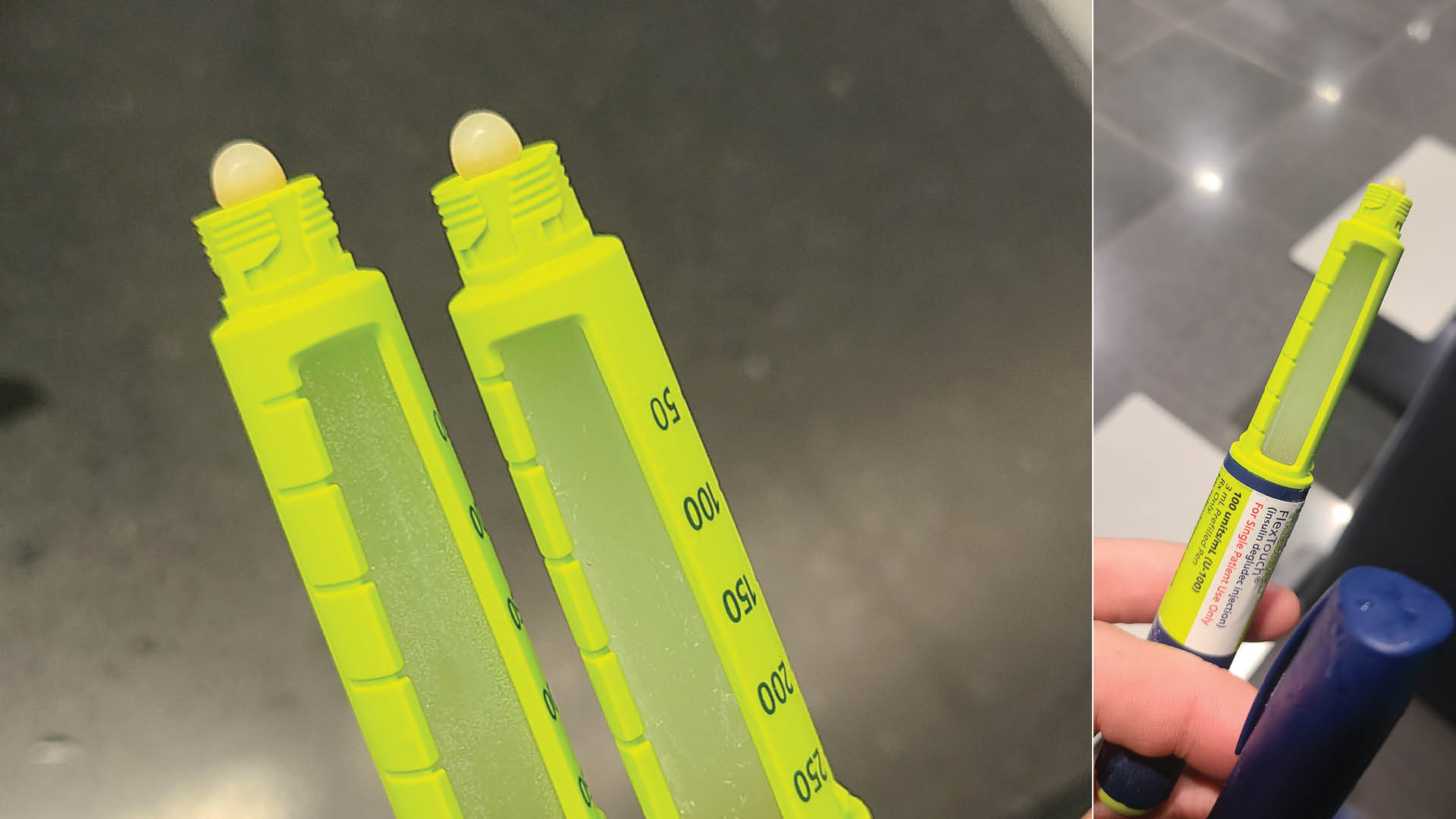
At This Point I Started Doing The Math
I knew that I had packed at least 1 extra flexpen for each type of insulin. Each could last me for as many as 4-6 weeks depending on my daily cardio level, eating habits, and reduced efficacy of the insulin after being opened and not refrigerated.
Many sources will tell you to travel with twice the amount of diabetes supplies necessary, but with the three-month trip I was planning, that wasn’t even possible.
I realized that I could likely make it through my entire trip with what insulin I had left, barring any other insulin-related emergencies or missteps. Regardless of that, my plan all along was to do as much research as possible about traveling with insulin and to learn some new best practices for my future of type 1 diabetes travel.
Researching Availability While In Portugal For Three Months
Now that I was settling into Portugal, I got to work with my research. Honestly, it was intimidating…but just like many other things…mostly just in my head. In each city or town in Portugal I visited, I found 1-2 pharmacies and simply started asking questions. Much like nearly every other Portuguese citizen I met, the pharmacists were extremely happy to help me and answer as many questions as I could ask.
I let them know that I was an American traveling with insulin and would be in Portugal for three months. Therefore I wanted to understand my options in case I needed to purchase more insulin or other supplies.
I showed them the exact insulin flexpens I was traveling with and they looked up the prices. (Note that Novolog is actually NovoRapid in European countries.) When the first pharmacist told me the cost…for a box…I actually had to confirm that I had heard him right.
The cost for a box of five insulin flexpens…out of pocket without insurance…was less than $50 USD!
Having seen my “before insurance” costs listed back home, this was both amazing and very disheartening. Knowing that I was planning to start an insulin pump when I returned home, I also asked about generic insulin aspart vials.
Insulin Costs Are Considerably Less Anywhere Outside Of The US
Reports show that the estimated net price of a Novolog/NovoRapid Insulin FlexPens in the U.S. is often between three and eight times higher than the list retail price in peer countries.
| Country | Average per NovoLog®/NovoRapid® Pen (USD) |
|---|---|
| United States | $19.86 (net price after rebates) |
| Switzerland | $5.36 (retail price) |
| Japan | $4.34 (retail price) |
| Germany | $4.11 (retail price) |
| Canada | $4.01 (retail price) |
| United Kingdom | $3.31 (retail price) |
| France | $2.62 (retail price) |
| Australia | $2.26 (retail price) |
| Netherlands | $2.20 (retail price) |
| Sweden | $2.12 (retail price) |
Source at end of article.
The cost for enough vials of insulin aspart to get me through a year would likely cost less than $50 USD…without insurance…in Portugal. (smacks head)
I also asked what I would need to do to get the insulin, and let them know that I had printouts of all of my prescriptions and doctors letters from the US if I needed them. Most pharmacists said that would be enough, but some said I may just need to make a consultation appointment with their head pharmacist onsite to write me a prescription…but that it should be very inexpensive and easy.
Sign Up Now For New Travel Tips & Inspiration
Other Diabetes Supplies I Asked About While In Portugal
Note that at the time my Freestyle Libre continuous glucose monitors (CGMs) were considerably expensive out of pocket even in Portugal—around $70 USD each. And at that time in Portugal, there wasn’t an option to get any Dexcom CGMs, at least where I was.
Knowing these things moving forward would at least help me when planning future trips. Getting insulin flexpen tips was super easy and cheap, as was the case with most of the other less critical diabetes supplies I asked about.
The Rest Of The Trip In Portugal
I would be traveling with insulin throughout Portugal, staying at different hostels, and I still needed to manage my storage. At nearly every hostel I spoke with the owner or just the staff upon check-in, and they all made accommodations for my insulin to be stored and refrigerated somewhere safe.
This was still scary, but even if I had another issue, at least I knew that I could get more insulin fairly inexpensively.
I made it the entire three months in Portugal without another problem with my insulin. And because I was walking so much and eating healthy, I actually adjusted my daily insulin use down significantly. There was no need for me to buy more insulin during the trip.
Traveling With Insulin Now: The Insulated Insulin Travel Cooler I Use
Since returning to the US, having dealt with the minor emergency of freezing my insulin pens, I knew I had to have a better plan for airline travel as well as for when I was staying in different accommodations. Now I own two different-sized insulated insulin travel cases.
My main insulated insulin travel case is larger and USB-powered, so it’s essentially like a mini-refrigerator for my insulin.
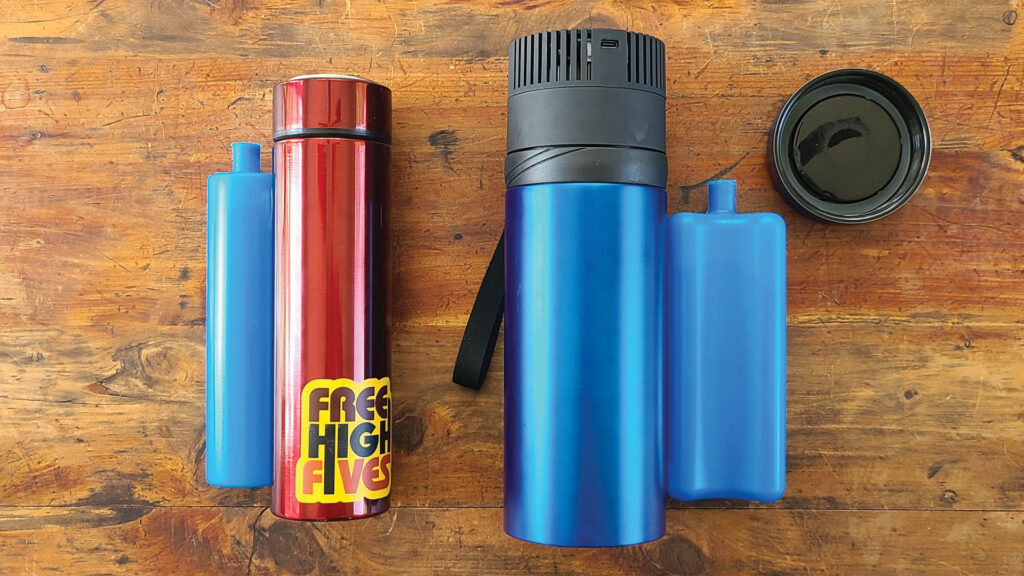
It’s able to keep my insulin cool endlessly if I keep it plugged in to either wall-power or a portable USB backup charger. That said, I actually rarely use the refrigerated lid, as this will keep insulin cool and at refrigerated temperatures for nearly two days with the ice pack.
My other insulin travel case is smaller—enough to store insulin up to 3-4 vials—and has a rigid ice pack that will still keep my insulin cool for nearly a day.
Sometimes these things feel like they cost a lot, but at the end of the day, the gains in confidence I get from them while traveling are well worth the cost. And assuming these are treated well and maintained, I have no doubt they’ll last for years and many, many trips.
Having them means I have to worry less about traveling with insulin so that I can concentrate on all the other things I still need to learn to get comfortable with international travel with Type 1 diabetes.
Traveling With Diabetes And Insulin: What’s Next?
First, if you’ve read this far, thank you! If you think someone you know or love can gain some confidence or tips about traveling with Type 1 diabetes—or with any other major medical condition—please share this article with them. Second, I hope you’ve gotten something out of it!
As with living with Type 1 diabetes, learning about traveling with diabetes—especially internationally and long-term travel—will be a marathon not a sprint.
For me, I’m now on an insulin pump and a new CGM. That change means I’ve moved on from insulin pens and now I’ll be traveling with insulin vials. No more need for flexpen tips. Now I’ll have to make room in my carry-on luggage for infusion sets and cartridges…at least until I know what I’ll have access to wherever I go.
Side note:
Internet research about actual costs on the ground in other countries wasn’t too helpful.
Sign up for the email newsletter and connect on social if you want to be in the loop for more of these types of articles in the future!
Safe Travels!
— Jason
Sign Up Now For New Travel Tips & Inspiration
Sources:
- Commonwealth Fund. How Prices for the First 10 Drugs Up for U.S. Medicare Price Negotiations Compare Internationally. (2024). Link to report.

